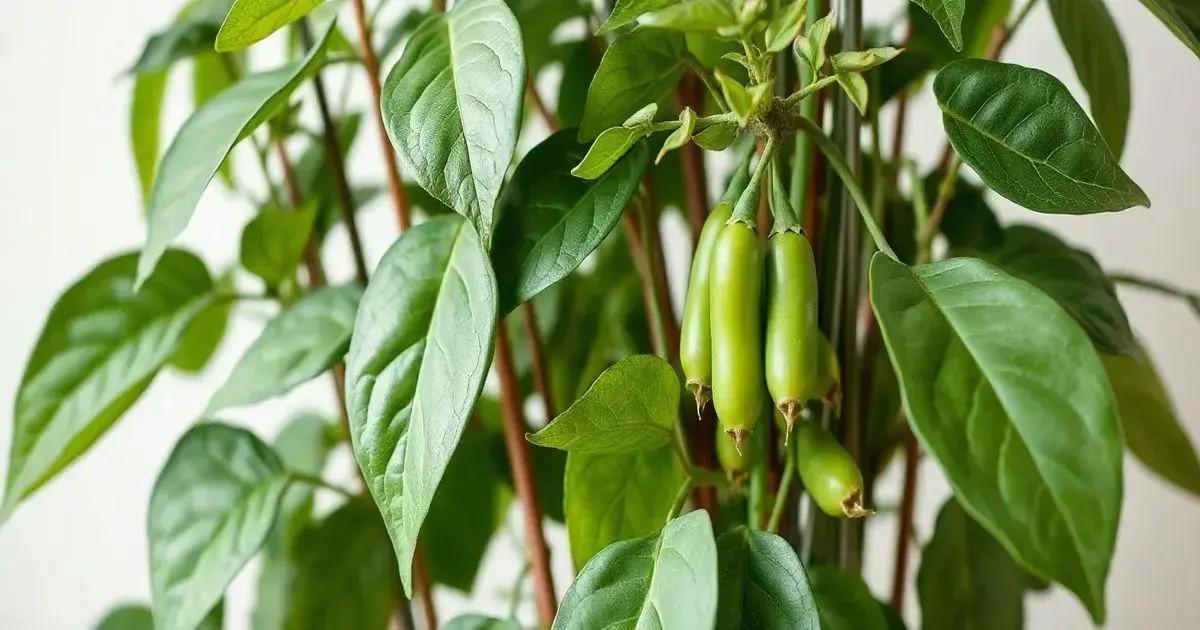How to Take Care of Beans Plant: 7 Essential Tips for Success
How to take care of beans plant effectively can seem daunting, but it’s all about understanding their needs. The secret to lush green plants lies in knowing how to balance water, sunlight, and nutrients. Here are tips that will guide you as you nurture your beans.
Table of Contents
ToggleUnderstanding the ideal soil requirements for beans
Understanding the ideal soil requirements for beans is crucial for successful growth. With the right soil, your how to take care of beans plant journey begins on a solid foundation. The type of soil can significantly impact the health and productivity of your bean plants.
Soil Composition for Beans
- Loamy soil: The best choice, providing a balanced mixture of sand, silt, and clay.
- Drainage: Ensure good drainage to prevent root rot.
- pH level: Ideal pH ranges from 6.0 to 7.0, slightly acidic to neutral.
- Organic matter: Incorporate compost to enhance nutrient availability.
Testing Your Soil
- Use a soil test kit to evaluate pH and nutrient levels.
- Mix in amendments like lime or sulfur as needed to adjust pH.
- Check for drainage by watering and observing how quickly excess water removes.
Soil Preparation Tips
Before planting, prepare your soil adequately:
- Loosen the soil to a depth of at least 12 inches to allow for root expansion.
- Remove rocks, weeds, and debris to create a clean planting area.
- Add organic material like well-rotted manure or compost to improve soil structure.
Using Raised Beds
Consider using raised beds for better soil control:
- Raised beds promote drainage and allow for customized soil mixtures.
- They warm up faster in spring, promoting earlier planting.
- Height reduces strain and makes maintenance easier.
Common FAQs
- What happens if I plant beans in the wrong soil?
Poor soil conditions can lead to stunted growth, yellow leaves, and unhealthy plants. - Can I grow beans in sandy soil?
Yes, but improve water retention by mixing in organic matter. - How often should I check my soil?
Test your soil at the beginning of each growing season and amend as needed.
For more on soil health, consider exploring indoor gardening techniques that also provide great tips for soil management.
Conclusion
In summary, understanding the ideal soil requirements for beans helps in achieving a thriving garden. By checking nutrient levels, ensuring proper drainage, and enriching your soil, you set the stage for robust bean plants. Don’t forget to incorporate your observations in your gardening journey!
Key watering schedules for healthy bean plants

Key watering schedules for healthy bean plants are vital for promoting robust growth and productivity. Proper moisture levels not only support the plant’s development but also prevent common issues such as root rot. Understanding when and how much to water is essential in your how to take care of beans plant strategy.
Watering frequency for beans
- During germination: Water freshly planted seeds every 1-2 days to keep the soil consistently moist.
- Early growth stage: Water every 3-4 days, depending on rainfall and temperature.
- Established plants: Once plants mature, reduce watering to once a week, ensuring deep soaking.
- Hot weather: Increase frequency to every 2-3 days during extreme heat to maintain soil moisture.
How to determine when to water
- Check the top 1-2 inches of soil. If it feels dry, it’s time to water.
- Look for signs of wilting; this indicates the plants may need more moisture.
- Use a moisture meter for accuracy, ensuring optimal watering levels for your bean plants.
Best practices for watering
To ensure effective watering:
- Water early in the morning to reduce evaporation and fungal diseases.
- Avoid watering directly on the leaves to prevent mildew and promote healthy leaf development.
- Use mulch around plants to retain soil moisture and reduce the frequency of watering.
Common FAQs
- Can bean plants survive in drought conditions?
Yes, but they will yield less. Maintaining consistent moisture is key for optimal growth. - Should I water my beans if it rains?
Check soil moisture first. If the soil is still moist, additional watering isn’t necessary. - How do I avoid overwatering?
Implement a schedule and monitor soil moisture levels regularly.
For further insights into maintaining optimal conditions for your plants, consider exploring indoor gardening techniques that emphasize effective watering practices.
Conclusion
The right watering schedule is pivotal for healthy bean plants. By adhering to these guidelines, you can ensure vibrant growth and a bountiful harvest. Consistent monitoring and adjustments based on weather will lead to successful gardening!
Optimal sunlight exposure for thriving beans
Optimal sunlight exposure for thriving beans is essential to promote healthy growth and abundant yields. Understanding light needs can elevate your how to take care of beans plant skills and ensure a successful harvest.
Sunlight requirements for bean plants
- Beans typically require at least 6-8 hours of direct sunlight each day.
- Morning sunlight is preferred as it warms the plants early and helps prevent diseases.
- Partial shade can be beneficial in extremely hot climates to avoid leaf scorch.
Identifying the best location
- Observe your garden throughout the day to spot areas that receive consistent sunlight.
- Avoid areas with tall plants or structures that may cast shade on your bean plants.
- Positioning plants to maximize light exposure during cooler months is crucial.
Using reflective surfaces
For an added boost, consider using reflective surfaces:
- Place white plastic or mylar around your plants to reflect sunlight, enhancing growth.
- Utilize light-colored mulch to minimize heat absorption and keep the soil temperature stable.
Common FAQs
- What if my beans are not getting enough sunlight?
They may become leggy and weak. Consider relocating them to a sunnier spot. - Can beans grow in low-light conditions?
While they may survive, their growth and yield will substantially decrease. - How can I tell if my beans are getting too much sun?
Watch for scorched leaves or wilting during peak sun hours, which can indicate too much exposure.
To enhance your gardening knowledge, consider exploring indoor gardening techniques that also emphasize proper lighting strategies.
Conclusion
In summary, achieving optimal sunlight exposure is critical for thriving beans. By adhering to these guidelines, you ensure that your plants receive the energy they need for vigorous growth and ample harvest.
In conclusion
Taking care of beans plants requires understanding their specific needs, including optimal soil, watering schedules, and sunlight exposure. By implementing the strategies discussed in this guide, you can cultivate healthy, thriving bean plants that yield abundant harvests. Don’t forget to explore additional resources, such as tips on enhancing your indoor garden, to further boost your gardening success.

